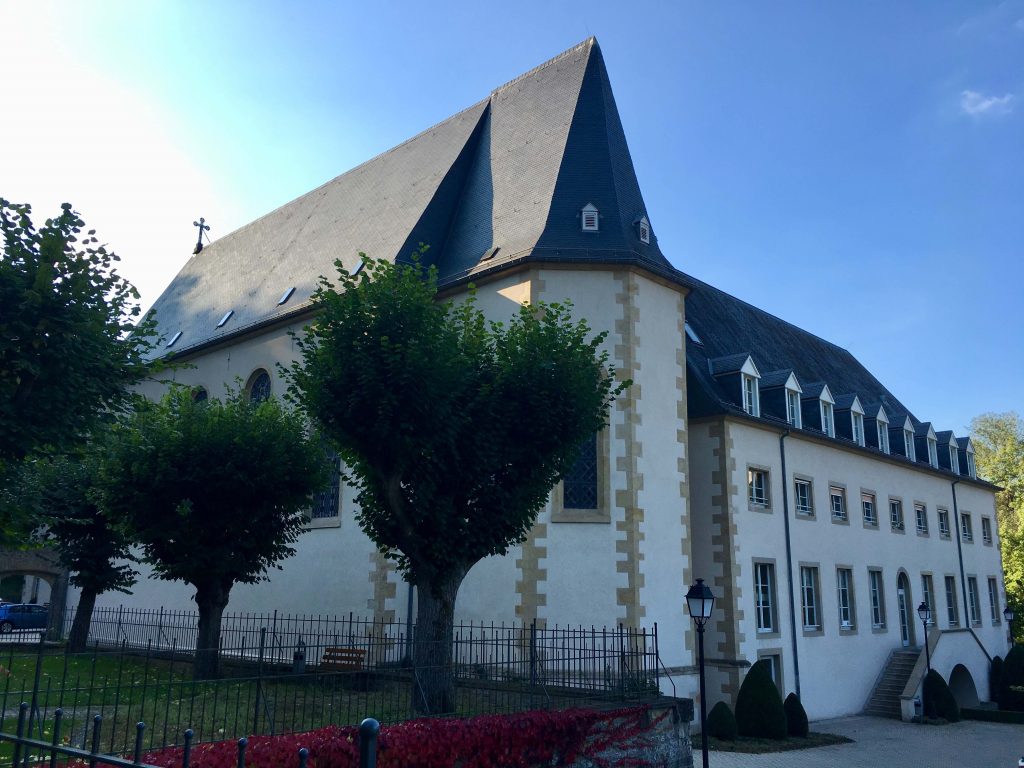Refuge des Aliénés
In 1843, after the acquisition of the ancient convent of the Clarisses, the Hospice Civil, which was located for a long time in the Grund, moved to the Pfaffenthal. The authorities already recognised in the old building that the different categories of needy people had to be separated from each other, primarily in order to guarantee the internal safety of the hospice. With the relocation of the institution, the so-called refuge des aliénés was built up to accommodate mentally ill people.
Agnes Brosius was one of many mentally ill people who lodged in this refuge. She was 69 years old when she entered the hospice in 1855. However, already before, Agnes suffered from mental illness. First, she lived with her brother, the priest of Aspelt, but when he died, she moved to her sister. For twelve years, both sisters lived in Luxembourg city, together with another woman, because they did not have much money. Finally, in 1855, Agnes’ sister made a request for her sister to be accommodated in the refuge des aliénés, because her mental illness was ever-worsening and the doctor ordered her to be committed to the Hospice Civil.

When Agnes entered the institution, up to 34 other mentally ill people could have been in the refuge, which measured circa 30 by 8 metres. Clearly, in 1855, doctors could not determine Agnes’ illness. If Agnes did not represent a danger inside the refuge, she was classified as a ”normal” mentally ill person. Altogether, five rooms were reserved for these people, whereas up to five people lodged in each chamber. Another five rooms were reserved for the so-called idiots and three cells with special facilities, such as bedside tables fixed on the floor, were meant for the mad patients. The refuge included one doctor, who had patients outside of the hospice as well, one surgeon, one secretary, one or two guards, one warden and at times, there were nurses as well. It seems as if mainly the guards and wardens took care of the patients.
We do not know very much about how Agnes’ stay at the refuge looked like. The main goal of this institution was to isolate the mentally ill people from the society outside of the hospice and from the other needy people inside the building. Food was provided by the Soeurs Hospitalières. When it comes to medical treatment, we can only make guesses by analysing contemporary sources from other countries. One very common treatment was the bloodletting to purge the body. We know that the refuge had a bathtub. Another standard therapy was the ice bath that patients had to undergo. Finally, it is most likely that Agnes had to undergo vapor baths since in 1857, the hospice bought a vapor machine, invented by doctor Neumann in Strasbourg. Unfortunately, we do not know what happened to Agnes and if she died in the refuge. We only know for sure that she stayed in the institution until at least 1857.
During a fire in 1867, the refuge des aliénés burnt down and the mentally ill patients were temporary transferred to the nearby prison or to the Hospice Central in Ettelbruck. The damaged wing was re-erected but was no longer used as a refuge. From then on, all the mentally ill people from the country were treated in Ettelbruck.
Findings are partially based on material from the Luxembourg City Archives and from Luxembourg’s press.
